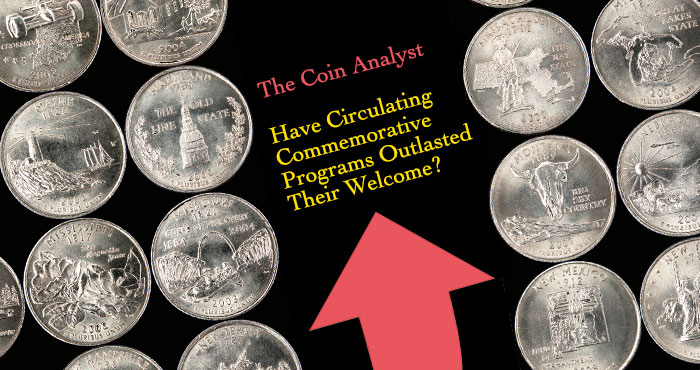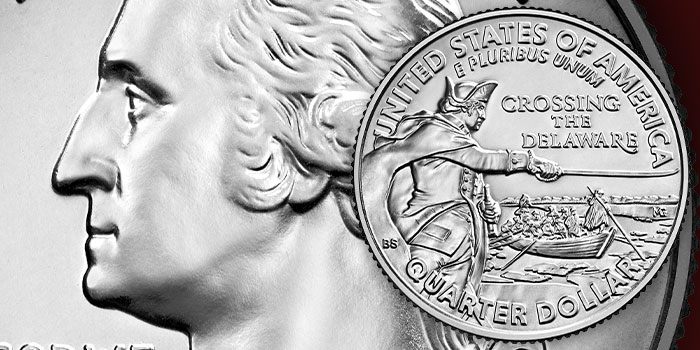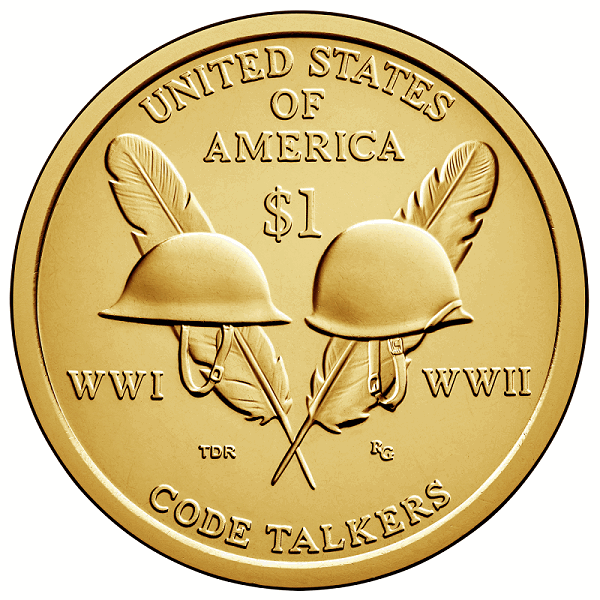
By Louis Golino, special to CoinWeek …..
A major new bill that will create several new series of circulating commemorative quarters and other coins has just become law. Unfortunately, it risks repeating several of the mistakes of other recent coin programs of this type.
In the annals of American numismatics, many circulating coin programs have played a key role in stimulating greater interest in the hobby and increasing the ranks of collectors. This includes, of course, coins such as Lincoln cents, Buffalo nickels, Washington quarters, and Walking Liberty half dollars, among others – sets of which at one time could be started, and in some cases completed, from circulation.
But during the 1990s, following the recommendation of longtime coin dealer and numismatist Harvey Stack that was supported by other numismatists and crafted into legislation by then-Representative Michael Castle (R-DE), a new type of coin was created – circulating commemorative quarters honoring each of the 50 states (that was followed by coins for the District of Columbia, Puerto Rico and the U.S. territories) with a different reverse design on each coin.
That overall quarter series, which ran from 1999 to 2009, was the most successful non-precious metal coin program in modern United States Mint history in terms of the billions of dollars of seigniorage it generated as well as the positive impact it had on the numismatic hobby. It was followed in 2010 by the America the Beautiful series of quarter dollars (also issued in a five-ounce silver version) that ended with the 2021 Tuskegee Airmen National Historic Site coin released into circulation on January 4 and in silver in March.
Then in April, the Mint will release into circulation a new quarter dollar with the original obverse portrait of President George Washington used from 1932 to 1998 combined with a new reverse design showing him when he was a general in 1776 overseeing his troops crossing of the Delaware River just before a crucial battle in the American Revolutionary War. That new reverse has been met with strongly positive comments from many collectors though a few say it is too busy a design for a quarter or complain about the different fonts used for the inscriptions.
The ATB series certainly had its fans, but overall collector interest in those coins was substantially less than it was for the state quarter series because the novelty of the idea wore off over time and because the national parks quarters were much harder to obtain through circulation and often had to be purchased at a premium from the Mint or coin dealers.
Harvey Stack
For Harvey Stack, not distributing the ATB coins through local banks at face value as the state quarters were was crucial to the decline of interest in circulating commemorative coins.

As he told me recently:
“There is no doubt in my mind that the U.S. Mint by adding premiums, limiting distribution, and trying to promote the new issues, are definitely contributing to the demise in the interest for commemorative quarters.
“If you look back about my comments in July 1995 to the Finance Committee of the House of Representatives, I explained to them that the premiums that the Mint assigned to many of the new [commemorative] issues from 1982 to 1995, were not what I felt would re-create an interest and maybe a new wave of collectors of coins.
“The big problem as it exists today is that the new commemorative quarters are sold in rolls and bags for a 25-35% premium. Instead, make enough that millions show up in daily change, in rolls at their banks, so that both the history of each state, entry into the Union, be commemorated and revealed to all, in their change, at FACE VALUE.
“That did excite the alleged millions of new and old collectors by finding a new design (in this case, information about each state, some symbol of each state) on the reverses, which would add both the education of the public and stimulate a new collector interest in collecting coins.”
 There is little doubt that more people would have built sets of ATB coins if they could have done so more easily from their change. But at the same time, interest in the series also waned because many of the designs seemed so similar (with certain spectacular standouts, like the 2014 Arches or 2012 Volcanoes coins). In addition, the length of the series — a second 11-year program following 11 years of state and territory quarters — was also an issue as many collectors grew weary of collecting the coins over time.
There is little doubt that more people would have built sets of ATB coins if they could have done so more easily from their change. But at the same time, interest in the series also waned because many of the designs seemed so similar (with certain spectacular standouts, like the 2014 Arches or 2012 Volcanoes coins). In addition, the length of the series — a second 11-year program following 11 years of state and territory quarters — was also an issue as many collectors grew weary of collecting the coins over time.
New Circulating Coin Program
Back in 2019, the U.S. Mint said that, based on feedback received in various forums and surveys of collectors, it planned to look into creating new circulating commemorative coin programs with changing designs that would feature animals, youth sports, the 250th anniversary of the nation in 2026 and Paralympic sports. And because the Mint understood that it was hard for collectors to maintain interest over a lengthy period of time, each would be of shorter duration than the previous quarter series.
Thus, the original congressional legislation called for, as U.S. Mint Acting Chief of Corporate Communications Todd Martin told me last fall:
“First four years of uniquely American animals quarters/American endangered [species] half dollars; 250th [anniversary of the founding of the America Republic in 1776 in 2026]; and four years of youth sports quarters/Paralympic half dollar along with a commemorative coin for 2028 Summer Olympic Games and authority to design and mint Olympic medals. There was also a bill for State/Territories/DC for Prominent American Women and strong interest on the Hill.
“The Mint worked with those cosponsors to come up with the current legislation [H.R. 1923, see link above. —CoinWeek] that reflected congressional efforts. The legislation … did replace the animal theme with four years of Prominent American Women quarters; 250th with modification to the original language to have one of the quarter designs depict women; retained original sports theme quarter/half dollar; and the authority to do Olympic medals. The [Olympics] commemorative coin was removed and will be introduced as a stand-alone. It is important to note the half dollar Paralympics was always part of the sports theme with youth sports.
In particular, under the new law, the Circulating Collectible Coin Redesign Act of 2020, a series of quarters will be issued from 2022 to 2025 with up to five designs per year that are “emblematic of the accomplishments and contributions of one prominent woman of the United States”, with the Treasury Secretary deciding how many new designs would be appropriate each year.
That will be followed in 2026 with up to five different quarter dollar designs emblematic of the U.S. semi-quincentennial with one of them on a woman or women’s contributions to the founding of the nation as well as new dollar coin designs commemorating the beginnings of the American Republic in 1776.
And that will be followed from 2027 to 2030 with up to five new quarter dollar circulating commemorative reverse designs on a single sport played by American youth per year as well as half dollars on sports dedicated to people with disabilities with a single Paralympic Sport honored on each coin with one new half dollar per year. In addition, medals honoring the 2028 Olympic Games to be held in Los Angeles are also authorized – as are five-ounce and fractional silver versions of the coins discussed above in quantities the Treasury Secretary deems appropriate.
Collector Reactions
Ever since word of the new circulating coin programs received coverage in the numismatic press, reactions from collectors have been almost universally negative with the exception of the semi-quincentennial coins that are reminiscent of the 1975-1976 Bicentennial coins that were very popular.
 Comments from collectors in the blogosphere and letters to editors of numismatic publications called the program “overboard and mostly covering unneeded themes”; noted that a “rest [in such programs] is long overdue” or said that state quarters were “fun, but the idea has been overplayed.”
Comments from collectors in the blogosphere and letters to editors of numismatic publications called the program “overboard and mostly covering unneeded themes”; noted that a “rest [in such programs] is long overdue” or said that state quarters were “fun, but the idea has been overplayed.”
Part of the problem is that the topics of prominent American women, youth sports, and sports for those with disabilities are better suited for commemorative coins and are not something many collectors want to see on circulating issues based on my discussions with them as well as following their reactions to the new program since it was first proposed. There is clearly a disconnect between what the Mint and Congress think collectors want and what collectors actually say they want.
As for silver versions, there might be some interest in fractional sized coins, especially with silver spot having risen almost $9 per ounce in 2020 – the most of any year since 2010. But there appears to be relatively little interest in five-ounce versions of the proposed coins based on collector comments in places like the PCGS Message Boards where I asked about this and based on the decline in sales of the ATB five-ounce coins over the course of the series (especially the more expensive collector versions sold directly by the Mint, whose price was recently increased to $229 for the coins that remain available).
Overall, to the extent there is a consensus, it is to keep the forthcoming new reverse design for now.
 As a friend of mine recently noted:
As a friend of mine recently noted:
“I would like to see Washington Crossing the Delaware in place for a while. I really see no interest in the famous women, youth sports for quarters, and disabled sports for the halves.
“I think changing up the design of the quarters all the time diminishes the overall appeal. Find a good design (like the new reverse of the American Gold Eagle) and stay with it for a period of time. I understand the Mint wanting to change designs because it helps their bottom line. It just reduces the quarters (or halves) to the same level as the American Innovation dollars.”
As my friend suggested, it is true that circulating programs with changing designs help to generate revenue for the Mint through seigniorage for the coins that circulate and the premiums on the collector version. But, at the moment, there just is not much interest in this approach, especially on the topics of the recent legislation.
Now that all these coins are coming, let’s hope that good designs are selected and that there turns out to be more interest in these topics than appears to exist today. I personally like the idea of a series on prominent American women, but my view does not seem to be very widely shared within the hobby apart from younger and female collectors, who are likely more interested in them.
In addition, there are many people who only collect modern American coins who will surely collect the new coins, and it is certainly possible that some non-collectors will find at least some of them intriguing and start building sets from change provided they are distributed widely through local banks. And with time views may change too on the topics of the new coins.
A Different Approach
On the other hand, there are denominations that have had a mostly static design for decades like the Roosevelt dime (or apart from a new reverse, the Lincoln cent, and apart from a new obverse, the Jefferson nickel) that as Charles Morgan recently suggested are long overdue for a bigger overall – a point made frequently by other collectors too.
Moreover, new designs are more likely to be popular if they stick to themes rooted in important events in American history or national symbols like Lady Liberty – something which has been proposed in the recent past by members of the Citizens Coinage Advisory Committee (CCAC) when it was led by Gary Marks.
The positive reception to the new quarter reverse before anyone has even seen the coin reflects the wide appeal of historic themes.
And the 2026 semi-quincentennial program should include new circulating commemorative designs – preferably of each denomination for one year only as well as collector versions in clad and silver, possibly including five-ounce silver versions.
In addition, the Mint does not have any plans to issue a five-ounce silver version of the 2021 quarter reverse design that is so popular, which is a lost opportunity.
 After 22 years of changing designs on the Washington quarter reverse–combined with all those clad dollars with different designs from the Presidential series to the Native American and then Innovation dollars, which do not circulate–collectors clearly wanted a break from multi-year coin programs with changing designs.
After 22 years of changing designs on the Washington quarter reverse–combined with all those clad dollars with different designs from the Presidential series to the Native American and then Innovation dollars, which do not circulate–collectors clearly wanted a break from multi-year coin programs with changing designs.
Meanwhile, it is well past time to consider entirely new designs for other denominations that finally break free from the excessive focus on dead presidents since the early 20th century. To stop repeating the same mistakes with these programs, the views of collectors and numismatists should be taken into greater consideration. Perhaps seasoned numismatists could present their views in congressional hearings and other forums such as the annual one the Mint held with numismatic stakeholders in recent years until the pandemic.
* * *
 Louis Golino is an award-winning numismatic journalist and writer, specializing primarily in modern U.S. and world coins. His work has appeared in CoinWeek since 2011. He also currently writes regular features for Coin World, The Numismatist, and CoinUpdate.com, and has been published in Numismatic News, COINage, and FUNTopics, among other coin publications. He has also been widely published on international political, military, and economic issues.
Louis Golino is an award-winning numismatic journalist and writer, specializing primarily in modern U.S. and world coins. His work has appeared in CoinWeek since 2011. He also currently writes regular features for Coin World, The Numismatist, and CoinUpdate.com, and has been published in Numismatic News, COINage, and FUNTopics, among other coin publications. He has also been widely published on international political, military, and economic issues.
In 2015, his CoinWeek.com column “The Coin Analyst” received an award from the Numismatic Literary Guild (NLG) for Best Website Column. In 2017, he received an NLG award for Best Article in a Non-Numismatic Publication with his piece, “Liberty Centennial Designs”.
In October 2018, he received a literary award from the Pennsylvania Association of Numismatists (PAN) for his 2017 article, “Lady Liberty: America’s Enduring Numismatic Motif” that appeared in The Clarion.





I agree with the majority of collectors on all points: We’re tired of the rolling design programs (even America the Beautiful felt like a retread), the Crossing the Delaware design is nice, semi-quincentennial coins minted only in 2026 would be very interesting, and completely new designs – which then remain unchanged for several years – for the cent, nickel, and dime would be exciting.
But the appeal of semi-quincentennial coins is greatly diminished if it’s dropped in a pool of other, ever-changing commemoratives. In fact, this may be my biggest issue with the notion of continuing to make circulating commemoratives. The 1976 bicentennial coins were exciting because they stood out. That can’t happen, at least as significantly, with endless commemorative programs adding so much noise to the scene. To paraphrase a line from “The Incredibles,” when every coin is special, none of them are.
Definitely the quarters have reached a saturation point and should be given a rest.
I would like to see the dollar bill eliminated and a totally new series of dollar coins issued in silver. And new $2 and $5 silver coins as well. That would be really interesting.
I would like to see circulating silver coins worth $10, $25, and $50. If for example, they made a half ounce or less $50 coin it would be quite some time before silver prices made it worth melting. Also make them thick, for example, to keep people from mixing them up with other denominations. I think it could work and would be so refreshing…for a “change.”
The problem that I see with this approach is that every (non coin collector) person I have talked to about even using one-dollar coins has stated rather vehemently that they would much rather carry a stack of paper in their wallet than a bunch of metal in their pocket. As long as paper currency exists for these denominations, coins are not likely to circulate well. And it appears that eliminating the paper denominations in order to force circulation of the coins would be met with public backlash. Indeed, the issue of discontinuing the paper dollar was the most contentious issue in congress when they debated the $1 coin act of 1997.
It’s all garbage and is not appealing. But if a coin doesn’t have silver or gold in it why pay a premium. Stick with silver.
Our current coinage has outlived its usefulness. It’s been relatively unchanged since the introduction of the copper-nickel five cent piece back in 1866. Since then, our dollar has lost 94% of its value. We need to reconsider the place that coinage has in our monetary system.
First, I’d suggest nixing the cent, nickel and dime. Today’s quarter is worth roughly what a cent was worth in 1857, when we discarded the half cent as being too valueless. Second, get rid of the one, two, five and ten dollar notes, replacing the five and ten with coins inspired by our pre-1933 gold coins. The twenty could co-circulate as both a coin and a note.
While we’re at it, we really don’t need a fifty dollar bill, either. The twenty and hundred are the only notes we need. We could bid the one, two, five, ten and fifty a worthy farewell with a spectacular series based on the Educational Notes of 1896, and completing the vision by soliciting designs for the ten through hundred dollar note.
Oh I pray we don’t go that direction…
C`mon, strong disagree with that. What’s next, eliminate the green from greenbacks?
Stable and consistant coinage without excessive images of novelty pop culture or from the social high horse would be my choice for the coinage of America. Proud classic designs serve the purpose of a national currency.
Following the thought of “images for everyone and everything”, our coinage would resemble Canadian Batman or Disney coins. Fun for a moment but not appropriate for our nation.
I think Bob Kaufman’s suggestions are excellent and creative but quite informed. I wish Congress and the Mint conferred with more people suchas Bob just by judging his acument from his post.
My only rebuttal is the American Innovation Dollars. I have used the coins in transactions and always get great interest in them. To do the ones that people want to keep one of: Mapping The Stars for Delaware in 2019, Rotary Dial from Massachusetts 2020 and the Hubble Telescope from Maryland in 2020. The only underwhelming design, albeit quite clever, is the Slide Rule for Connecticut. What people love about them is the high grade, the beauty of the designs and the fact they can see fresh edge lettering. Most dislike golden dollars as there hasn’t been any put into circulation since 2017, with the Sac/Native American dollars being out of circulation in 2011. Therefore more and more of these coins that circulate look dull, worn and unattractive with their edge lettering fading (and determining IF you have a no-edge lettered dollar that is supposed to have one quite difficult).
I am happy the American Innovation dollars are not dumped into circulation to the extent of the State Quarters and the 2000 Sac dollars, collectors at least get a greater chance of buying at a premium a series with modest or scarce mintages. To me the US Mint is being quite fair by excluding them from the annual proof and uncirculated sets. I partially agree that American Innovation dollars should circulate. But in mintages between 250 – 750 thousand and for only one or two of the States of the five to be issued in one year. The BU rolls would still be available at the US Mint but sakes of them would be limited over a 2 year period to 2 – 3 nmillion to avoid adding the glut of golden dollars still in the US Treasury vaults. This would satisfy the collectors by both having a coin series NOT doomed to overproduction while offering some a chance to find some of them in pocket change. It would peak the curiosity of the public and attract new collectors and help with US Mint sales of their proofs and reverse proofs. For example, a teacher finds the 2019 Polio vaccine dollar in change or from a bank roll and happens to love biology and science as well as teach it. The teacher may go to a coin collection magazine or forum to learn their are Reverse Proofs offering packaging with great basic information about Dr. Salk’s discovery of the Polio Vaccine in1953 which she could share with her class and keep for herself or offer as a prize to her top student. The teacher could go to the secondary market or, if still available, at the US Mint website.
I would think this would be a win-win for the public, collectors, and the government’s bottom line if such as strategy was tried with the American Innovation Dollars.
Oh, and as a postscript, allow people to melt their high-content copper coins up to a certain value. This action would likely increase the supply of copper and lower its cost.
I think it would be exciting if we stopped with the circulating commemoratives, and completely redesigned all the coins, but got away from the dead presidents and went back to purely allegorical figures – but give those allegorical figures distinctively non-white characteristics, such as was done with the Native American on the buffalo nickel or Lady Liberty on the American Liberty 225th Anniversary Gold Coin.